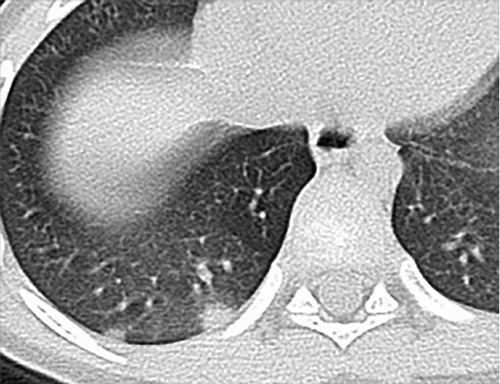Children Experience Milder COVID-19 Cases
Younger patients have milder symptoms, fewer positive CT scans, and less lung involvement.


Patients under age 18 develop less severe cases of COVID-19 than older patients, experiencing milder symptoms, fewer positive CT scans, and less lung involvement on imaging.
Currently, according to World Health Organization data, only 5 percent of patients affected by this outbreak are under age 18, and little research has been conducted into how the virus has affected this group.
However, new research published April 6 in Radiology: Cardiothoracic Imaging reveals specific differences between how the disease manifests in both pediatric and adult patients. The findings should be used to help providers determine how best to follow disease progression.
“Pediatric patients with COVID-19 have relatively milder clinical symptosm, a higher prevalence of negative CTs, and decreased disease extension on imaging than adults,” wrote the team led by Xinhua Wei, from the department of radiology at Guangzhou First Hospital with South China University of Technology in Guangdong. “These observations should be heavily weighted when balancing the risk-benefit ratio for using chest CT in the pediatric population with COVID-19.”
To determine whether any significant differences appear between pediatric and adult patients with COVID-19 infection, Wei’s team examined patients’ CT scans, as well as monitored clinical symptoms, for 61 patients. Of the group, 14 were under age 18, leaving 47 individuals to be categorized as adults. All patients had confirmed COVID-19 cases with real-time reverse transcriptase polymerase chain reaction (RT-PCR) testing.
Based on their analysis, the team found several variations in how the disease manifested and progressed.
Among pediatric patients, Wei’s team determined, fever was less common, seen in 42.9 percent of patients compared to 83 percent of adults. More pediatric patients also experienced a cough – 42.9 percent of patients versus 29.5 percent of adults. In some cases, younger patients exhibited no symptoms at all. Based on study data, the severity of pediatric COVID-19 cases were split evenly between mild and common, 50 percent each. For adults, however, 8.5 percent of cases were mild, 83 percent were common, and 8.5 percent were considered severe.
Pediatric patients also experienced far fewer positive CT scans. Overall, only 50 percent of patients under age 18 had positive CT images while 91.5 percent of CT scans were abnormal for adults. Additionally, younger patients had fewer pulmonary lobes affected by parenchyma opacities.
Ground-glass opacities occurred most often in adults (53.5 percent), followed by ground-glass opacities with consolidation (27.9 percent). While ground-glass opacities also occurred frequently in children (42.9 percent), bronchial wall thickening was more common in this group (28.6 percent) than with adults. The reason behind greater prevalence of bronchial wall thickening remains unclear, investigators said, but they posited it could be related to differences in distribution of coronavirus infection along the respiratory epithelium or to possible co-infection.
Altogether, pediatric patients had far lower lung severity scores than adults – 1.86+/-2.41 and 8.89+/-4.54, respectively.
To underscore these findings – and the lack of positive CT scans – the researchers reiterated the overarching consensus that imaging not be used as a front-line method for diagnosing disease, particularly in younger patients.
“Healthcare systems should consider judicious utilization of routine chest CT for assessing COVID-19 in the pediatric population, balancing the potential risks posed by ionizing radiation against the most common scenario of milder clinical and radiologic disease,” they said.
Study with CT Data Suggests Women with PE Have More Than Triple the One-Year Mortality Rate than Men
April 3rd 2025After a multivariable assessment including age and comorbidities, women with pulmonary embolism (PE) had a 48 percent higher risk of one-year mortality than men with PE, according to a new study involving over 33,000 patients.
The Reading Room: Racial and Ethnic Minorities, Cancer Screenings, and COVID-19
November 3rd 2020In this podcast episode, Dr. Shalom Kalnicki, from Montefiore and Albert Einstein College of Medicine, discusses the disparities minority patients face with cancer screenings and what can be done to increase access during the pandemic.
Predicting Diabetes on CT Scans: What New Research Reveals with Pancreatic Imaging Biomarkers
March 25th 2025Attenuation-based biomarkers on computed tomography (CT) scans demonstrated a 93 percent interclass correlation coefficient (ICC) agreement across three pancreatic segmentation algorithms for predicting diabetes, according to a study involving over 9,700 patients.
Can Photon-Counting CT be an Alternative to MRI for Assessing Liver Fat Fraction?
March 21st 2025Photon-counting CT fat fraction evaluation offered a maximum sensitivity of 81 percent for detecting steatosis and had a 91 percent ICC agreement with MRI proton density fat fraction assessment, according to new prospective research.